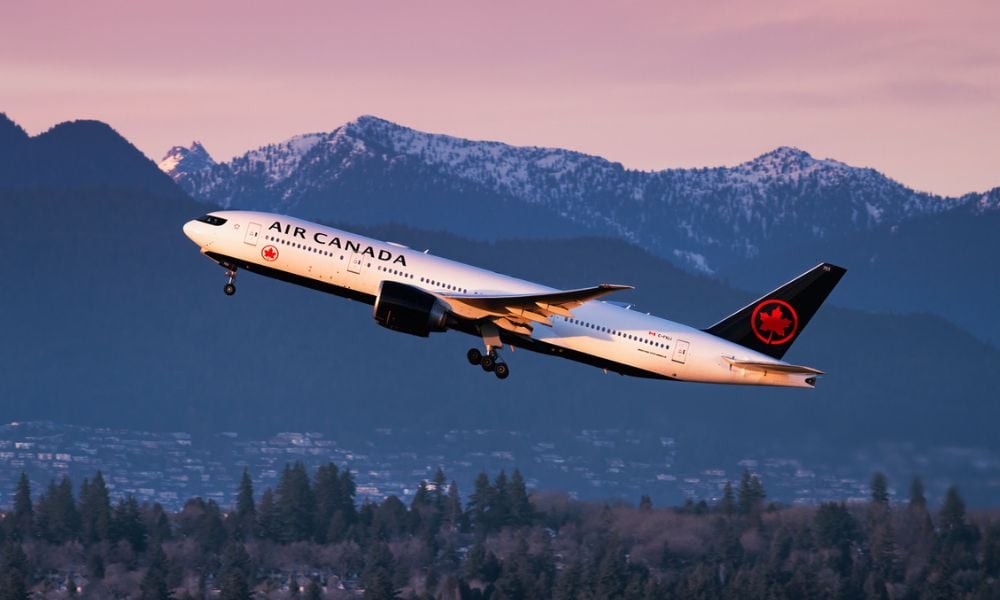
Forced to retire at 60 years old, federal court examines 'discriminatory' conduct

The Federal Court of Canada recently dealt with a case involving retired Air Canada pilots who challenged the airline's mandatory retirement policy. The dispute centred around whether requiring pilots to retire at age 60 constituted age discrimination under the Canadian Human Rights Act.
In a decision that could have implications for other industries with mandatory retirement policies, the Court upheld the Canadian Human Rights Tribunal's dismissal of the pilots' complaints. The ruling hinged on complex legal questions about how to determine the "normal age of retirement" for pilots and which airlines should be used as comparators.
The case had a long history, building on previous challenges by other groups of Air Canada pilots who were forced to retire at 60. Earlier court rulings had established that determining the "normal retirement age" required looking at retirement practices at comparable airlines.
The key legal issue stemmed from paragraph 15(1)(c) of the Canadian Human Rights Act, which stated it was not discriminatory to terminate employment when an individual reached "the normal age of retirement for employees working in positions similar to the position of that individual." This provision was repealed in 2012, but still applied to pilots who retired before that date.
The current case involved a group of pilots who turned 60 and retired between January 1, 2010, and December 15, 2012. They were part of a larger group of retired pilots who had been challenging Air Canada's mandatory retirement policy for years.
The Tribunal had to determine with how exactly to define which airlines employed pilots in "similar positions" to Air Canada for the purpose of determining the normal retirement age. It ultimately decided to use six criteria:
The Tribunal ruled that only airlines meeting all six criteria would be included in the comparison group. This approach was based on the Federal Court's 2009 decision in an earlier pilot retirement case, which described Air Canada pilots' work as "flying aircraft of varying sizes and types, transporting passengers to both domestic and international destinations, through Canadian and foreign airspace."
The retired pilots argued this approach was too restrictive and excluded many airlines whose pilots performed similar work.
They contended the Tribunal should have used a broader interpretation focused on the functional aspects of pilots' jobs rather than airlines' commercial operations.
As the Tribunal noted, the pilots "clearly disagree with the criteria applied by the Tribunal in previous rulings and with what the courts decided on review and appeal." However, it found they had not provided sufficient justification for departing from the established approach.
This case highlighted several important employment law issues:
Using the six criteria, the Tribunal determined which airlines to include in the comparison group. It then conducted a statistical analysis, which showed that the employer employed more pilots than all the other airlines in the group combined during the relevant time period (2010-2012).
This finding was crucial, as it meant the employer's mandatory retirement age of 60 effectively set the "normal retirement age" for the entire comparison group.
As the Tribunal explained:
"The number of pilots employed by Air Canada exceeded the number of pilots employed by all comparator airlines combined, throughout the relevant period... Consequently, the age at which pilots retired at the comparator airlines did not matter because Air Canada employed the majority of the pilots."
The pilots also argued they were denied a fair opportunity to present evidence and make their case, in violation of the Canadian Human Rights Act and principles of procedural fairness.
However, the Court disagreed, finding the Tribunal had given them multiple chances to provide input and evidence at various stages of the process.
The Court noted that the workers "had opportunities to address what they describe as the core issue—the composition of the comparator group." It found no breach of procedural fairness in how the Tribunal conducted the proceedings.
In dismissing the workers' application for judicial review, the Court concluded the Tribunal's decision was reasonable and followed established legal principles. It rejected arguments that the Tribunal had misinterpreted previous court rulings or failed to properly consider human rights principles.
The Court emphasised that the workers "have not shown that the Tribunal committed any reviewable errors that would render its decisions unreasonable according to the principles of Vavilov."
While acknowledging the workers' disagreement with the outcome, the Court found they have not established “the rationale or outcome” to properly challenge the Tribunal’s decision. Thus, it dismissed their application.
The decision underscores the challenges in proving age discrimination claims, particularly in industries with established mandatory retirement practices. It also highlights the complexities involved in determining appropriate comparator groups when assessing workplace policies for potential discrimination.